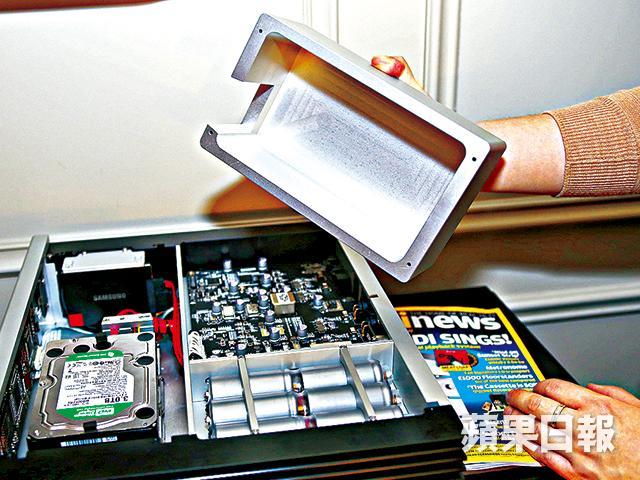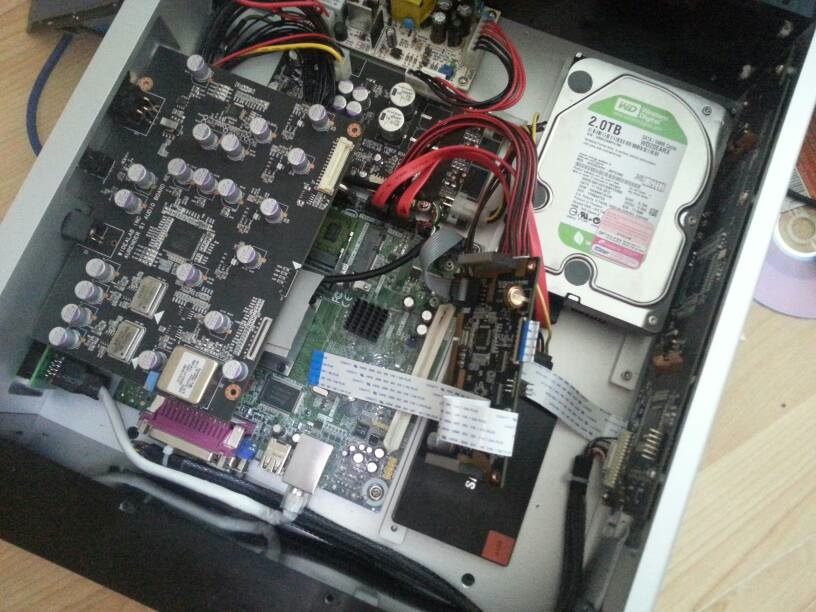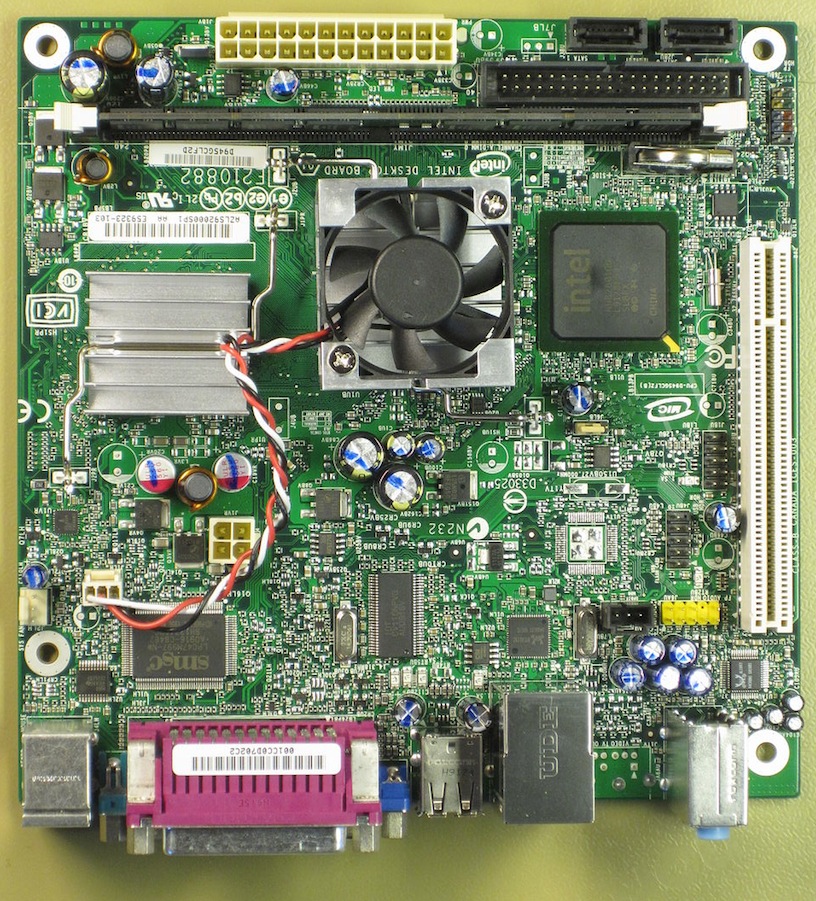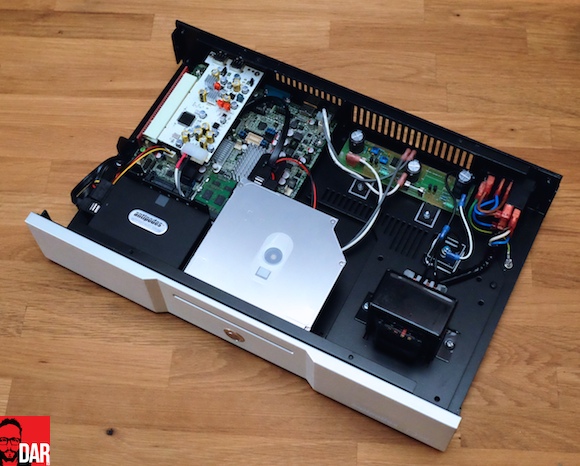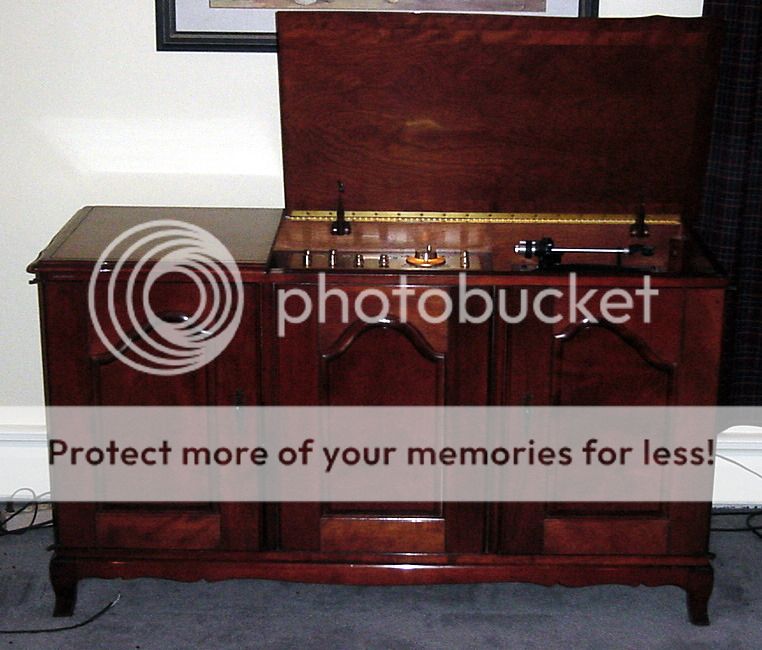GRAY AREA - Computers & Hard Disks in the listening room - Pictures
73.229.29.71 |
||
| Posted on August 26, 2016 at 12:16:37 | ||
|
Posts: 46280
Location: USA Joined: June 22, 2001 Contributor Since: February 2, 2002 |
Some audiophiles will insist that hard disks and computers do not belong in the listening room. Yet some very high end and well reviewed commercial music servers include both. If the goal is to get computers and hard disks out of the listening room then these manufacturers clearly violate certain audiophile principles. The whole topic of whether a computer and hard disk should not be in the listening room is gray-area and not black & white. Of course many of these music servers may be highly optimized by the manufacturers for audio and that's great. Some do a better job than others. But to think that only high-end audio manufacturers have a lock on optimizing computers for audio is not the case. DIYers are capable too. A couple high-end commercially available music servers based on industry standard mini-ITX computer motherboards, a variant of the open source Linux operating system, and readily available disk drives are shown below. Study the photos. You decide on the facts. Aurender W20 music server: It consists of an industry standard fanless mini-ITX mother board underneath a custom Aurender digital board. It's internal hard disk is capped with what appears to be a 10-lb chunk of machined aluminum. It also incorporates a battery bank for power and a nice front panel display. Here we have an example of a very expensive music server that includes both a standard mini-ITX computer motherboard and a hard disk. Aurender W20 music server: Note the mini-ITX computer motherboard under the Aurender digital board. LiFePO4 battery bank removed. mini-ITX motherbaoard similar to the one found in the Aurender. Note the bottom connectors and layout in both photos. Note the long white PCI slot connector to the right on the mini-ITX motherboard and on the mini-ITX motherboard in the Aurender. Pretty much the same layouts. Here the example board is obviously not fanless but the point is to show that the very high-end Aurender W20 does in fact use one of many available mini-ITX computer motherboards on the market. Antipodes DX Reference music server: Is based on a mini-ITX computer motherboard, a variant of the Linux computer operating system, and a SoTM PCI USB card Antipodes DX Reference music server: For those who vehemently believe that COMPUTERS & DISK DRIVES have no place in the high-end listening room, perhaps these music servers should be scrapped for a minimalist streamer without a disk. Perhaps something like the microRendu. While you eliminate the disk in the listening room, you don't completely eliminate the computer but at least it's a very very tiny computer vs the motherboards found in the large and pricey music servers above. I'm not a streamer fanboy trying to persuade folks that streamers are the only way to go. I thoroughly enjoy my Mac Mini COMPUTER in my office and my microRendu streamer in the basement listening room. Your choice for your specific situation and need is the best way. |
|
| +1 ................ [nt], posted on August 26, 2016 at 14:04:04 | |
|
Posts: 18285
Location: Minneapolis - St.Paul Area Joined: September 2, 2000 Contributor Since: May 16, 2021 |
nt
 |
| No Dac? Is that possible? nt, posted on August 26, 2016 at 16:39:47 | |
|
Posts: 10581
Joined: April 12, 2002 |
/ |
| OK, I get it! nt, posted on August 26, 2016 at 17:55:40 | |
|
Posts: 10581
Joined: April 12, 2002 |
/ |
| RE: Computers and noise, posted on August 27, 2016 at 05:25:15 | |
|
Posts: 2426
Joined: July 11, 2007 |
A Pi is silent by default @39$. And your iPower cost me 50$ extra. The USB I clean up with an active USB filter for less then 100$. Do I need more? Why should I spent hundreds of $ to make an extremely complex silicon dinosaur silent!?!? The entire approach (and discussion) is IMO nonsene! With things like that we played around 10 years ago - remember Cics. It took the industry years to catch up. Now they try to sell systems/solutions which are actually outdated again. And the actual underlying key issue still hasn't been properly addressed. The key issue: Making DACs that do not respond to upstream induced distortions. Because we, as users, will never ever get the upstream environment under control. Cheers ----------------------------------------------------------------- blog latest >> The Audio Streaming Series - tuning kit pCP |
| ?, posted on August 27, 2016 at 06:11:14 | |
 Aries, Sonos Connect, and Vega all talk to the laptop on the rack. |
|
| I have the same, posted on August 27, 2016 at 08:09:12 | |
|
Posts: 13158
Location: Kent Joined: June 1, 2002 |
ie a number of music 1TB ssds powered separately by excellent power supplies. |
| Acoustic noise is the problem... Not electrical..., posted on August 29, 2016 at 10:40:14 | |
|
Posts: 821
Joined: January 18, 2002 |
Hi Abe. Thanks for all the pictures! In all my measurements and listening over the years, I have always contended that the issue with "noise" is the **acoustic** noise that spinning hard drives and computer fans may have on the serenity of the listening room. Sure, back in the old days, electrical RF/EMF noise could have been a problem but over the last 10 years huge improvements have occurred such that CPU's run with less power, hard drives have higher data density and use less power, and of course SSD's are silent. IMO, the whole obsession around isolating ethernet, USB timing and electrical "noise" issues makes no sense and I do believe needs to be evaluated in an objective fashion and some evidence provided. Unless someone can show that this is an issue, it's just hype IMO. This is especially significant in the context of expensive DACs which I presume have been "over-engineered" to provide quality output... Otherwise why should we be paying many hundreds if not thousands if it can't even shield itself from a little bit of interference and provide clock stability!? In this context, I think those computer servers are fine. I happily run a fanless HTPC in my listening room with SSD drive(s). Hard drives are a no-go for me though (especially that cheap 2TB WD Green!), but if it's essentially silent, no problem. I personally would not spend the kind of money those "audiophile" server computers are "commanding" though from a value perspective... ------- Archimago's Musings: A 'more objective' audiophile blog. |
| RE: Acoustic noise is the problem... Not electrical..., posted on September 1, 2016 at 02:41:14 | |
|
Posts: 2426
Joined: July 11, 2007 |
You forget one thing. Everything you go for is gonna be a compromise. A well done local playback solution won't necessarily be worse than a bad network solution. Network related load and network related distortions need to be compared to distortions caused by local HDD/SSD. This all is not black or white. And it's basically all about effort. IMO it requires much less effort to build a quality, no-frill, headless, disc-less streaming client. Before you agree to anything Archimago is saying (basically all systems sound equal, noise and other distortions doesn't have impact because he can't measure them and bits are bits - everything is a hype ), I'd suggest to start reading stuff about one of his favorite measurement tools to get the picture: http://nwavguy.blogspot.de/2011/02/rightmark-audio-analyzer-rmaa.html Enjoy. ----------------------------------------------------------------- blog latest >> The Audio Streaming Series - tuning kit pCP |
